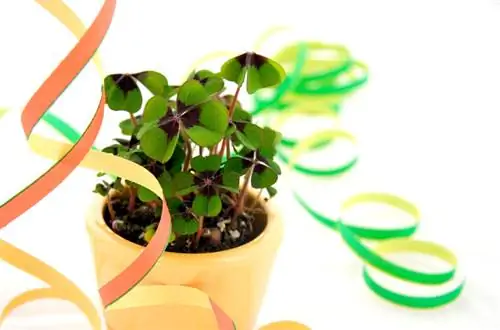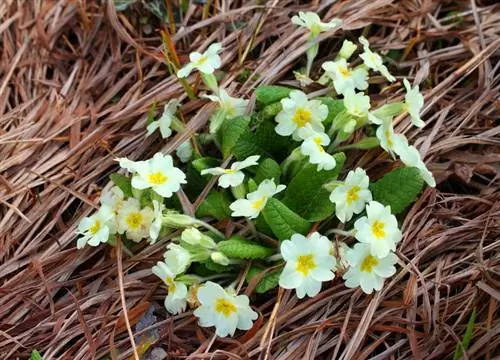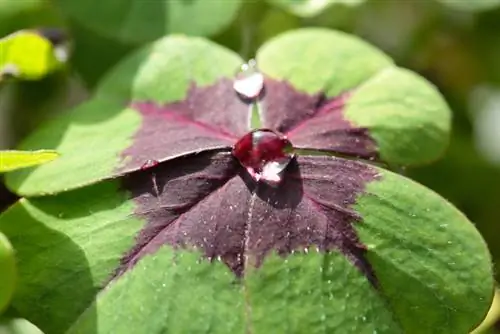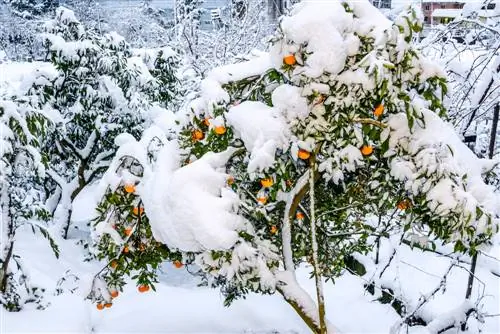- Author admin [email protected].
- Public 2023-12-16 16:46.
- Last modified 2025-01-23 11:20.
Certain types of clover are only grown by gardeners as green manure and are therefore incorporated into the soil before the first frost. When caring for clover over several years, a distinction must be made between frost-hardy and non-frost-hardy types of clover.
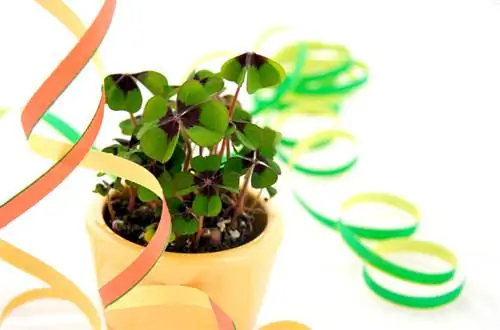
How can I successfully overwinter clovers?
White clover (Trifolium repens) and red clover (Trifolium pratense) are frost-hardy types of clover. Lucky clover (Oxalis tetraphylla) is sensitive to frost, but can overwinter indoors: store it in a light light if the leaves are green, dark if the leaves are wilting, and water sparingly and do not fertilize when the leaves are dormant.
The frost-hardy types of clover
The white clover (Trifolium repens) and the red or meadow clover (Trifolium pratense) are easily winter hardy in most locations. Therefore, they can also be grown over the winter as green manure and livestock feed. These types of clover can also be used as a replacement for the lawn in the garden.
Overwintering the lucky clover successfully
The lucky clover (usually Oxalis tetraphylla), which is often given away as a potted plant on New Year's Eve, is sensitive to frosty temperatures. However, it can overwinter in the house under the following conditions until spring temperatures secure it a place on the balcony or terrace:
- with green leaves: overwinter in a bright location
- if the leaves are wilting: overwinter in a dark place
- in the case of hibernation: water sparingly and do not fertilize
Tip
So that types of clover, such as red and white clover, which are hardy outdoors without any problems, get through the winter well, they should be sown in September at the latest when planting new plants at a location.

